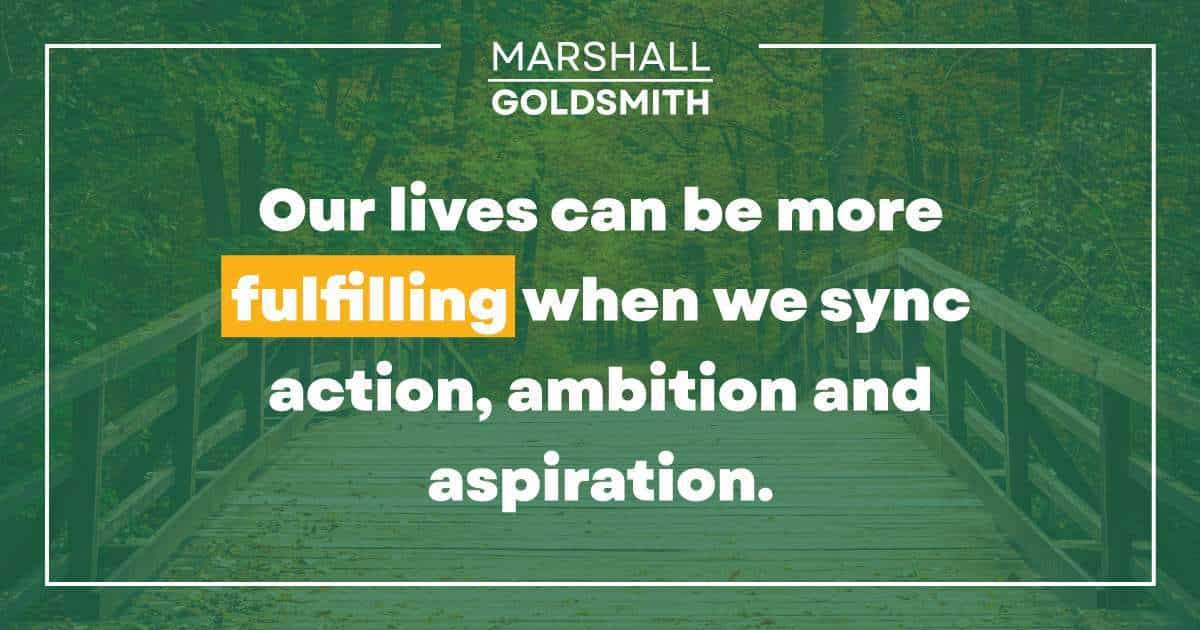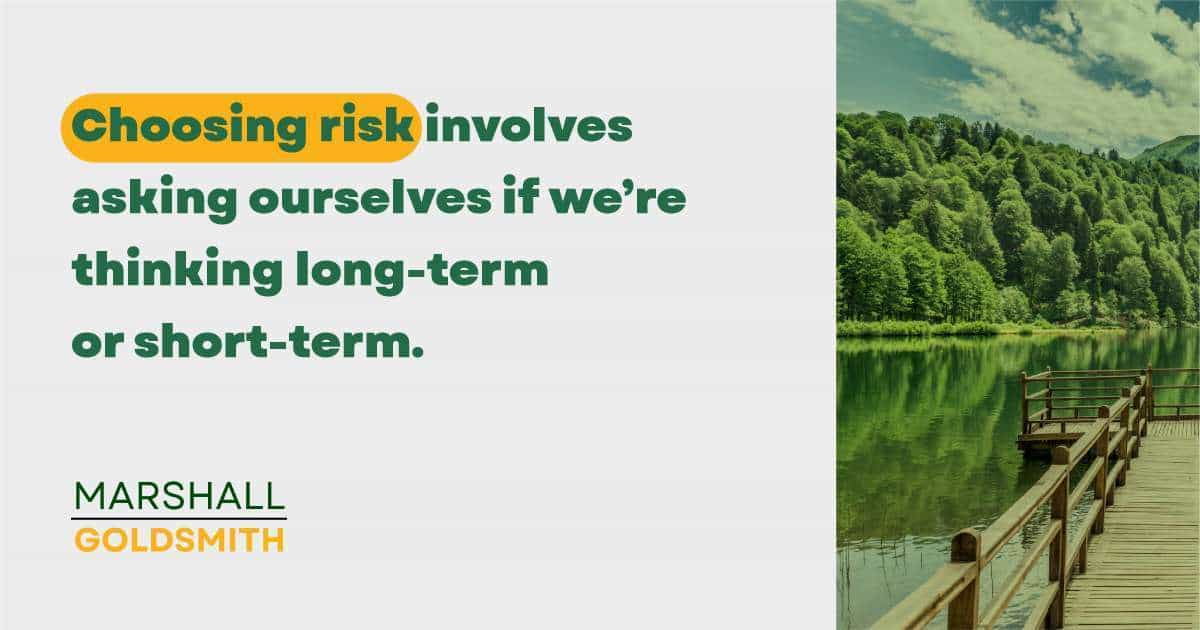Playing Favorites By Marshall Goldsmith There’s a reason I devote...
To weigh decisions that require something other than technological help, you can use what I have identified as the Triple A’s of Action, Ambition, and Aspiration to help you figure out what might work best for you.
Aspiration refers to what we do in the service of a higher purpose in our life. The time horizon for aspiration is infinite — we always aspire, we are always becoming something and someone more.
Ambition represents focus on achieving defined goals. It is time-bound, determined by how long it takes to achieve a goal.
Action represents our activities at a specific moment in time. Action’s time horizon is immediate, forever in the now.
Ask yourself how far from your present moment each variable points — minutes, years, a lifetime. The distinguishing characteristic of each variable is its time horizon.
Distinguishing these three time dimensions and seeing how well they serve one another (or not) can influence how close we come to living an earned life.
Many of the CEOs I work with are tempted to reside almost entirely in Ambition. They are always aiming at targets and using their Action to serve their Ambition. Aspiration in the form of seeking and serving a higher purpose in their lives hardly ever enters the picture, at least not until they near the end of their CEO life and wonder, “What was all this for?”
It seems to be the opposite for my more high-minded and idealistic colleagues and friends. They put too much weight on Aspiration at the expense of Ambition. They dream big and act small.
Our lives can be more fulfilling when we align these three variables so that Action is synced with Ambition is synced with Aspiration.
Aligning Action to Ambition to Aspiration also applies to our risk decisions to make better choices. When we must choose between accepting a serious risk or rejecting it, we need to pause to ask ourselves which time horizon the risky choice is serving: Is it our long-term Aspiration, or our shorter-term Ambition? Or is it Action, serving little more than the short-term stimulation that comes from filling an immediate need, when we know that it’s worth taking a risk and when it is not? This helps us to take smarter risks that turn our opportunities into fully realized rewards.
Here’s an example that illustrates this:
When I was twenty-seven and living in Los Angeles, I loved putting on a wetsuit and taking my boogie board to Manhattan Beach. I wasn’t an experienced surfer. I was a novice, riding a boogie board on my belly. But I loved the addictive thrill of the sun, the surf, and the small frisson of danger when I caught a wave.
On one particular day, I was out with my friends, Hank and Harry, and feeling particularly bold. You have two choices out on the water: small waves or bigger waves. You get more rides with the small waves, but the excitement is small compared with the big waves that veteran surfers

waited for farther from shore. As the day wore on, the waves got bigger. With each successful ride of a small wave, Hank and Harry and I egged on one another to try a big wave.
I could feel my confidence and adrenaline level rising under the mutual goading. I timidly inched farther and farther out to where the better surfers were waiting for the big one. On the horizon, I could see a large swell approaching. I paddled toward the nine-foot wave, which from my prone position on the boogie board looked like a mountain about to engulf me. Not surprisingly, my timing was off and I was swallowed up by the wave and driven with great force headfirst into the shallow ocean floor.
My neck was broken in two places, C5 and C6. For a while, I was not sure that I would walk again. I lost the use of my left arm for nine months. But I eventually fully recovered. There were three less fortunate surfers that summer with similar injuries who never walked again.
During the two weeks while I was lying on my back in the hospital, I had lots of time to savor the mixed emotion of regretting my decision while feeling grateful that I wasn’t paralyzed or dead.
If I had appreciated the Action-Ambition-Aspiration triad back then, I might or might not have made a more prudent choice. But at least it would have been a fully considered choice that I would have been comfortable with, regardless of the outcome.
I would have known that my aspiration in life had nothing to do with surfing. I was never going to be a great surfer. It was not an important part of who I wanted to become as a human being. I would have known that my ambition for surfing was strictly confined to developing enough proficiency to enjoy myself without risking injury.
I also would have seen that my actual choice was guided by Action, all in the service of an immediate thrill that was not in sync with who I was or who I wanted to become.
But I’d like to think that if I’d had the Triple A’s back then as my risk-decision tool, I would have chosen differently, although I can’t say for sure (using the Triple A’s may lessen our irrationality, but it doesn’t cure it).
Today, I know I would have chosen differently . . . .

Adding Too Much Value Won’t Get You There By Marshall...
C-Suite Master Class: No, But, However By Marshall Goldsmith Continuing...
The Doerr Institute: Expanding the Market for Coaches By Marshall...
Making Leadership Development Part of the College Degree at Rice...
Sanyin Siang – Winner of the Thinkers50 Marshall Goldsmith Coaching...
Thinkers50 Marshall Goldsmith Distinguished Achievement Award in Coaching – Nominees...
Leading with Influence: What Is Influence360°? By Marshall Goldsmith Founder...
Are You a Dominator, Manipulator, Persuader or Influencer? By Marshall...
Leading with Influence: Redefining Modern Influence Part 2 By Marshall...
My mission is simple. I want to help successful people achieve positive, lasting change and behavior; for themselves, their people, and their teams. I want to help you make your life a little better. With four decades of experience helping top CEOs and executives overcome limiting beliefs and behaviors to achieve greater success, I don’t do this for fame and accolades. I do this because I love helping people!
As an executive educator and coach, I help people understand how our beliefs and the environments we operate in can trigger negative behaviors. Through simple and practical advice, I help people achieve and sustain positive behavioral change.